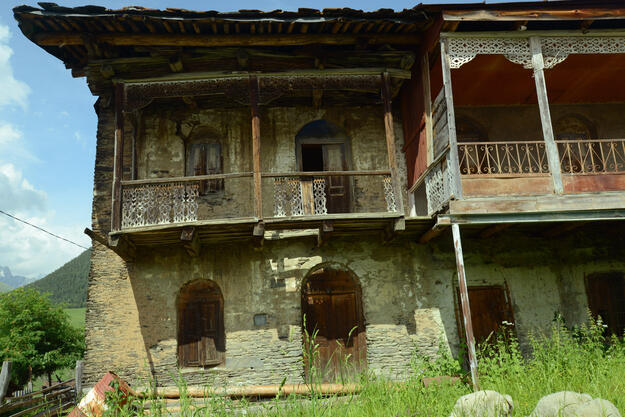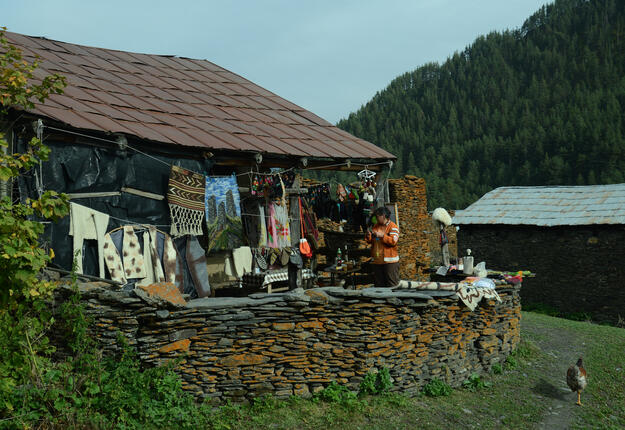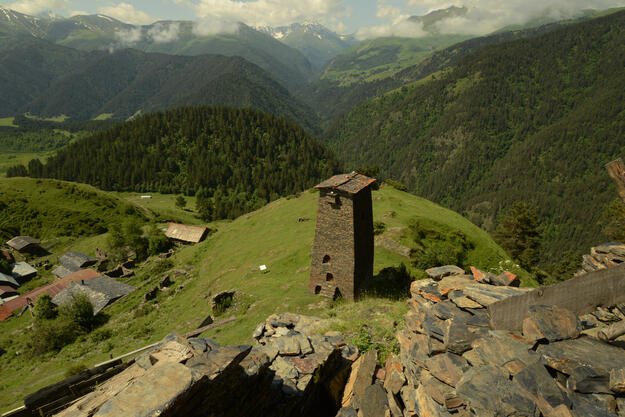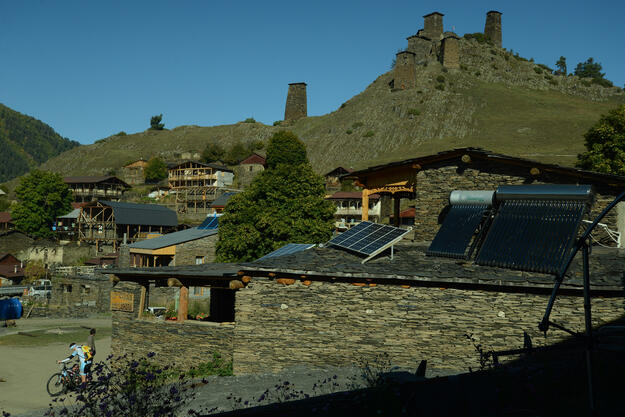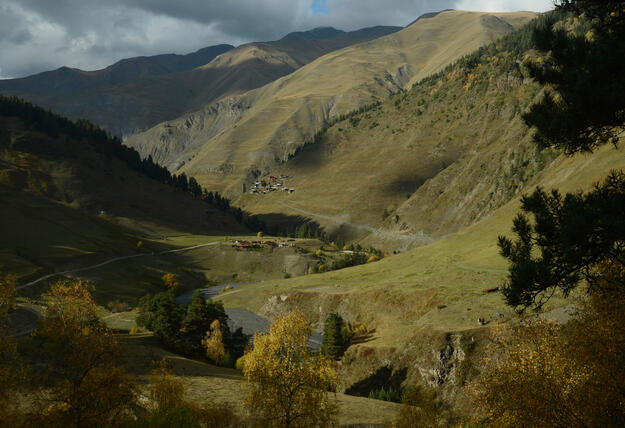Tusheti National Park
The Tusheti region stretches across four mountain valleys of the Central Caucasus in eastern Georgia, an area now under protection for its natural endowment and cultural heritage of its inhabitants. A landscape of tall peaks, deep gorges, and high waterfalls, Tusheti is home to several dozen small settlements, occupied only during the summer months. Historically autonomous under the Georgian kings, the Tush people for whom the region is named made their living as cattle herders. As winters make shepherding impossible in Tusheti, the Tushetians followed a pattern of transhumance, moving from the highlands to warmer flatlands in the fall, and returning to their mountain villages every spring. They traded and shared grazing rights with nearby populations, but surviving fortifications in Tusheti, as well as in neighboring Chechnya and Dagestan, also attest to a history of invasions and raids. Many Tushetians continue to follow a religious system combining Christian and non-Christian elements, and worship in shrines dedicated to local saints.
Today, the local population continues the pattern of wintering in the lowlands of Kakheti and the city of Kvemo Alvani. A single unpaved road leads to the village of Omalo, the largest in Tusheti, after a five-hour drive. Impassable in winter, it leaves the mountain villages inaccessible by road between October and June, when only a few dozen inhabitants stay in their homes. But in the spring, when the fields are carpeted with flowers, and during the summer months, more and more visitors choose to visit Tusheti, spurring a new sustainable tourism economy. Increased visitation in the summer months is leading to the recovery of dry stone building skills as more buildings are converted into guesthouses or homestays. To foreign tourists, as well as to younger generations of Georgians interested in experiencing the Georgian countryside, Tusheti offers hiking, horseback-riding, and other opportunities to participate in the life of the region, such as accompanying shepherds on their three-day drive up to or down from the high pastures.
In recent years the rehabilitation of the country’s infrastructure has become a national priority in Georgia, as a means to improve the country’s global economic competitiveness. But the proposed construction of a new road through Tusheti presents a conundrum for Tushetians: while improved and safe connectivity would bring many benefits to the population, it also risks jeopardizing investment in sustainable tourism in favor of mass tourism development. Many have decided to oppose construction, and in 2017 an online petition collected more than 12,000 signatures. Instead, many believe that improvements to the conditions of the roads in the lowlands should be a higher priority than the construction of a new highway. Through the 2020 World Monuments Watch, World Monuments Fund seeks to contribute to the growth of sustainable tourism in Tusheti, the revival of traditional skills, and to the long-term development of the area in the best interest of its inhabitants.

